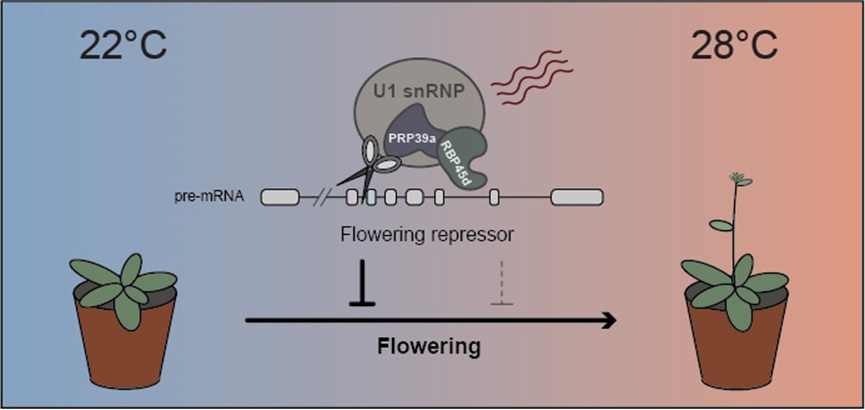[Shih-Long Tu] New regulatory mechanism for flowering time control under rising temperature
POST:Precursor messenger RNA (Pre-mRNA) splicing is a crucial step in gene expression whereby the spliceosome produces constitutively and alternatively spliced transcripts. These transcripts not only diversify the transcriptome, but also play essential roles in plant development and responses to environmental changes. Much evidence indicates that regulation at the pre-mRNA splicing step is important for flowering time control; however, the components and detailed mechanism underlying this process remain largely unknown. Ping Chang, the graduate student in Dr. Shih-Long Tu’s team, focuses on the U1 snRNP, a major component of the early-stage spliceosome. He identified and investigated the function of a previously unknown component of U1 snRNP in Arabidopsis called RBP45d. RBP45d is an evolutionarily conserved component of U1 snRNP. Ping Chang and his colleagues found RBP45d works together with another U1 snRNP component PRP39a in splicing regulation and flowering promotion. Moreover, they also revealed that RBP45d and PRP39a function in temperature-responsive flowering regulation. Their findings provide important hints for the understanding of how plant sense and respond to temperature changes.
Chang et al., 2021, The Plant Cell
Link :

